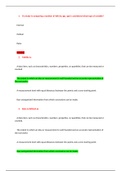Samenvatting
Summary Marketing for Hospitality and Tourism 7th edition
This book is summarized based on the chapters that are needed for the track Attractions and Themeparks Management at Breda University of Applied Sciences for course Marketing.
[Meer zien]









